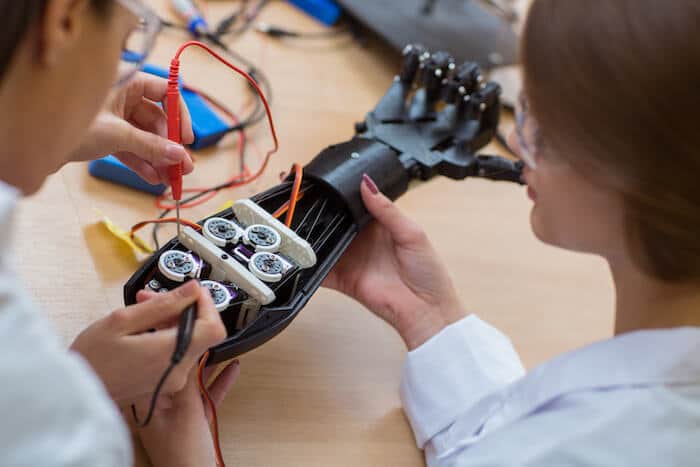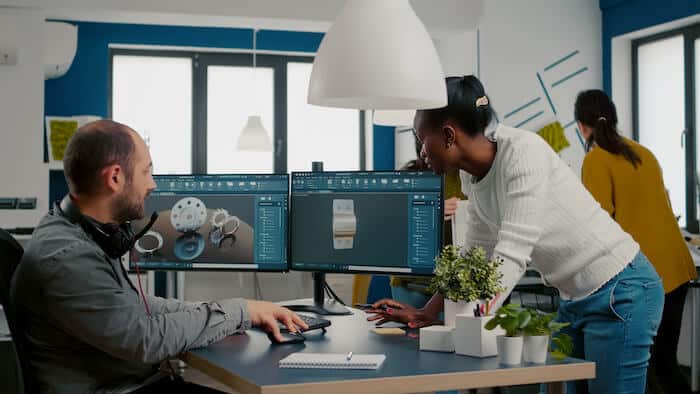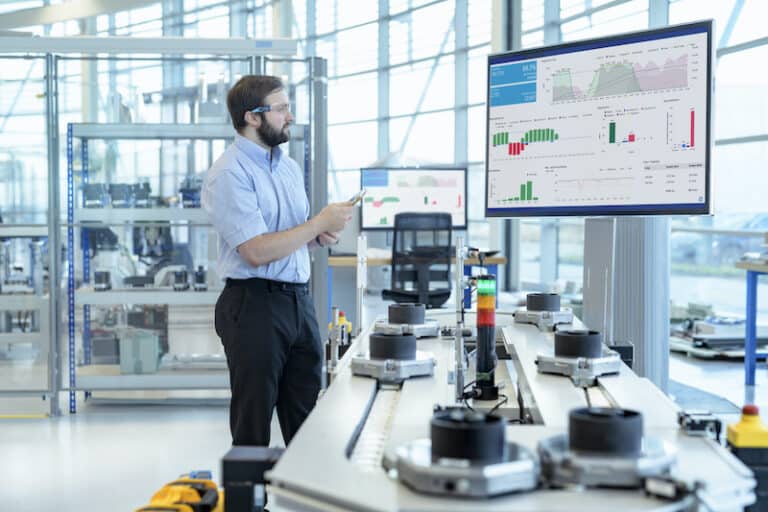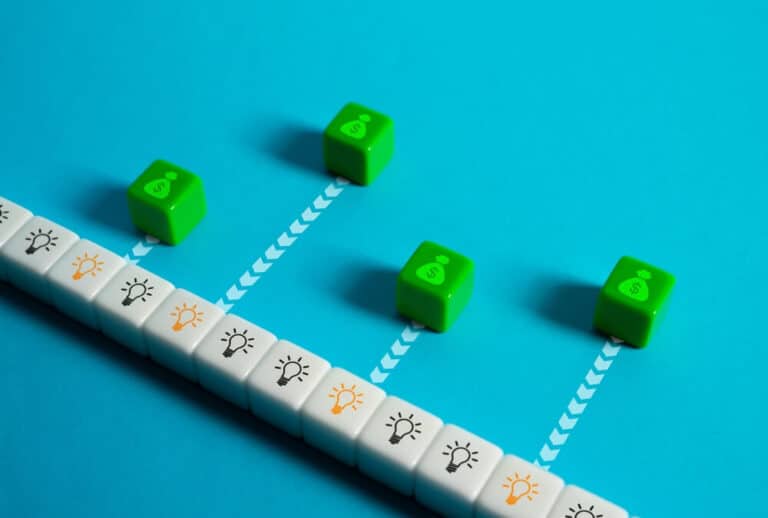If you’re familiar with new product development or just starting to research how it’s done, you know prototypes are an important part of the process. You use these mock-ups to check the form, fit, and function of your product concept, to try out ideas, and to get feedback from potential customers.
When most people talk about this step, they refer to “prototyping” or “making prototypes.” But if you talk to experts in new product development, they call the step “prototype engineering.” And whether you make or engineer your prototypes can impact your final product and may give you a significant competitive advantage.
If you need a better understanding of the role of prototyping in product development, read our article on how to make a prototype. It covers the preparation, advantages, manufacturing process, and testing.
This article will dig a bit deeper and discuss the difference between making and engineering. We’ll look at the added benefits of engineering your prototype and how to take your design process to the next level by taking a more rigorous approach to every aspect of prototyping.
What’s the Difference Between Prototyping and Prototype Engineering?

To better understand what we are talking about, let’s look at the definition of the verb form of engineer: to lay out, construct, or manage as an engineer.
So, when you engineer your prototype, you do make it, but you also lay out (define) and manage the whole process. And that is where the value is, which we will discuss in more detail in the next section.
It helps to think of prototyping as its own mini-product development process, with its own steps and information flowing between the steps. Below we share the typical outline used for prototype engineering.
1. Write a Prototyping Specification
If there’s no specification, you’re not doing engineering. Engineers even have specification documents on how to create specification documents. Specifications are precise, written requirements stating what you want the thing or process you’re defining to do.
Remember to get input from all the stakeholders on your engineering team. As you work through the process, your prototyping team checks against the specifications to ensure you’re meeting the requirements.
For prototyping, you should include:
- What you want to learn from your prototype: what design, function, manufacturing, and support questions you need answers to
- How, where, and with whom the prototype will be tested
- Cost and schedule constraints
- Allowable deviations from the proposed product design
- Safety requirements
- Industry standards and requirements (required for medical devices)
- Specific performance values and product characteristics requiring verification and validation
- Physical deliverables
- Documentation deliverables
2. Develop a Testing Plan
Using the specifications, develop a plan on how you’ll test every aspect of your design. You may test in a lab, with your staff, or with potential customers. It could evaluate form, fit, or function or answer market research questions. Maybe it explores how sensitive your product is to dimensional tolerances. What’s important is that the plan addresses all the specifications.
3. Create a Prototyping Project Plan
Now it’s time to put a project plan together. Detail and accuracy depend on your product and your industry. It could be a simple schedule with three or four tasks and a cost estimate, or it might be a complex plan with dependencies, milestones, and phase gates. Don’t overdo it, but don’t neglect mapping out the steps, the schedule, and the costs in a project plan.
4. Design the Prototypes
Wait, design the prototype? Don’t you already have a preliminary or even detailed design of the product? Isn’t that why you’re making a prototype?
Yes, at this point in the product development process, you have a reasonably well-defined product design. And if the prototype is an exact copy of the current product design, you just need to check the design against your prototyping specifications and make any necessary changes to meet the specifications.
But usually, you’ll be experimenting with different features, materials, or colors and run through a few iterations. You must put each of those variations into a design document so manufacturing knows what to make. You start with the current design state but modify as many prototype designs as needed.
5. Construct the Prototypes

- Modeling: This approach aims to put something together by hand. You are not using manufacturing machines. Instead, you are molding clay, bending and welding metal, hand painting, and cutting out cardboard. But for this level of detail, a craftsman or artisan does the modeling.
- 3D Printing: Also called additive manufacturing, 3D printing was invented to make prototypes. It allows a user to go directly from a computer model to a physical part by building the part one layer at a time. 3D printing has come a long way, and there are now seven different types of additive manufacturing, including full-color parts, metal, and components with injection molding material properties.
- Rapid Manufacturing: Sometimes, making the parts that go into your product by hand or with 3D printing doesn’t quite work. You can employ traditional manufacturing methods to make a part quickly — CNC machining, welding, laser cutting, soft molding, or sheet metal forming or bending. Also, if your product has electronics, you should use rapid prototyping techniques to build your prototype boards. Make sure you find a vendor that specializes in prototype manufacturing.
- Injection Molding: If your final product contains injection molded parts, sometimes 3D printing or machining won’t give you the parts you need for your prototype. In that case you need to make tools and injection mold the components. The good news is that some companies specialize in low-volume rapid injection molding using high-speed machining and other rapid tooling processes.
- Virtual Prototyping: You can also construct a prototype that only exists on a computer. Using advanced simulation tools, you can create a highly accurate digital mock-up. Recent advancements in numerical simulation have made this approach more accurate and often less expensive, and faster than building hardware.
6. Carry Out Your Test Plan
Congratulations, you have your prototype! Now you must carry out your test plan rigorously and methodically. Experimentation and flexibility are encouraged but document everything. If you are not rigorous at this step, all the work you put into engineering your prototype will be wasted.
7. Write a Report
Finally, your prototyping team must create a report. The report records the testing results and provides input on every specification. For some, it’s as simple as a specific requirement met. But if the condition was a complicated group of questions, the data you obtained must be written down. That goes double for observations and conclusions made by whoever did the testing.
Engineering, Not Fabricating
Looking at this process, you can see the difference between fabricating a mock-up and the more rigorous and beneficial function of prototype engineering. There is a difference between being an engineer and being a maker. It is the difference between home cooking and being a chef in a busy restaurant — both can make delicious meals, but the chef has the process and experience needed to do it at scale and make money at it.
What Are the Benefits of Prototype Engineering?

- Are there any flaws in your idea?
- Can your product be made?
- How much will your product cost?
- Are potential customers excited about your product?
- What does your product really look like?
- How does it feel to use your product?
- Are the proportions right?
- What are the best materials to use?
- Will it fit together?
- Can you take your product apart to repair it?
- Is your product easy to use?
- Is it strong enough, will it stay cool enough, and what happens if you drop it?
- Does it do the things you want your product to do?
- Are there ways the mechanical design can be simplified or improved?
- How might you solve a challenging design problem?
- Which design option is the best?
- Is one iteration of the design better than another?
You can answer these questions if you just make a prototype. But if you leverage prototype engineering, you get more accurate, well-documented insights. The biggest advantage to engineering versus making is listing your specifications and ensuring they get addressed. It is not uncommon for an undisciplined prototyping effort to create more questions than answers.
The tighter focus on design as part of the effort also helps your design engineers move beyond “what if” and deal with physical realities. They have been staring at a 3D model for some time, and it’s easy to lose track of how the product performs in the real world. Let them collaborate on your engineering prototype to allow them to think about usability, manufacturability, user interface, and so much more. They can also drive the specifications and test plans to provide input for their own problem-solving.
How do You Build a Prototype Engineering Team?

Just as some manufacturers focus on only prototype manufacturing, some mechanical engineers decide to focus on getting the greatest value and efficiency out of prototyping. Most prototype engineers have a degree in manufacturing or mechanical engineering. Larger companies may even have a prototype engineering department with multiple experts and equipment to excel at prototypes.
Whether you’re a startup or an established product brand, you must assess your prototyping needs. You should determine if you need a prototype engineer in-house, if you want to use a consultant, or if you want someone on your existing engineering team to apply the principles of prototype engineering to your project, maybe with the assistance of an expert. It all depends on how significant your prototyping needs are over time.
And a great place to start building that team is with Gembah. We not only get the value of laying out, constructing, and managing prototyping with engineering principles, we’re experts in the entire new product development process. As the world’s first marketplace for product development, our proven platform is here to help you on your journey at every step, including making sure you get the most out of your prototypes. Let’s talk.



